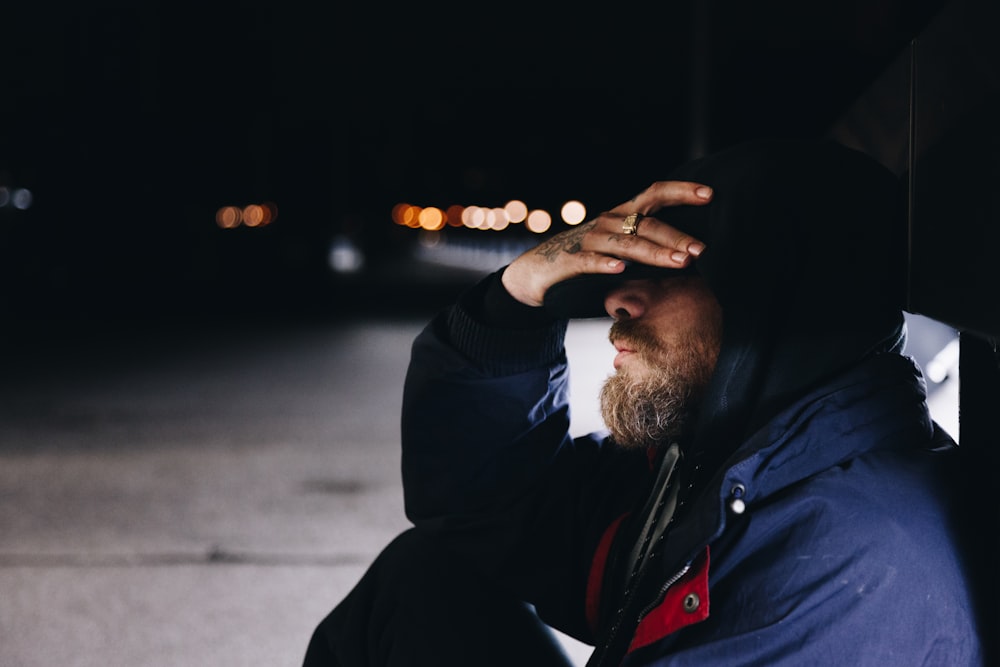Written by Rian Gordon
Happiness is a common pursuit among human beings. It’s even explicitly listed as one of our unalienable rights in the United States Declaration of Independence (“Life, Liberty, and the pursuit of Happiness”)! If you were to ask anyone, I can almost guarantee that they would tell you they would rather be happy than sad or angry (in fact, a 2016 survey showed that 81% of Americans would rather be happy than achieve greatness in their lifetime). But like it or not, it is impossible for us to be happy 100% of the time, and believe it or not, that’s actually a good thing!
Emotions are a constant and vital part of life, and they heavily affect our everyday choices. While it seems like it would be really nice to never have to feel “negative” emotions, such as sadness, anger, grief, fear, or embarrassment, research has actually found that it is incredibly important to allow ourselves to feel a variety of emotions! Here are a few of the many reasons why allowing ourselves to feel “negative” emotions at times is essential to our mental, physical, and relational health.
1. Feeling leads to healing
The vast majority of experiences that we go through in life will likely elicit different emotional reactions within us. In fact, we often feel not just one, but a variety of emotions per experience! It is not reasonable for us to expect ourselves to be constantly happy through every single experience, particularly when life gets hard. Trying to stifle uncomfortable or negative emotions and put on a brave face 100% of the time is not healthy — we need to process the negative emotions in order to lead healthy and balanced lives (Levine & Wald, 2020). Refusing to acknowledge what we are feeling can really take a toll on our physical, emotional, and mental health.

Experiencing prolonged periods of stressful emotions such as anxiety or fear can affect just about every system in your body — your muscles, your heart, your stomach, even your reproductive system (Cohen et al., 2020)! Depression or extreme sadness can also effect you profoundly, leading to symptoms such as insomnia, weight fluctuations, increased sensitivity to pain, and even a weaker immune system. Allowing ourselves to process emotions in a healthy way can help our bodies, minds, and hearts stay balanced, and can help us to pull through when we experience difficulties. Remember, “You have to feel it to heal it.”
2. “Negative” emotions can help protect us
Emotions possess a literal energy that motivates us to action. The energy and motivation that comes from difficult emotions can actually help us protect ourselves, particularly when it comes to our relationships. Sadness, anger, or fear can help us weed out unhealthy relationships or other negative aspects of our lives. They can also help us know when we need to make changes. It is important to be aware of these emotions, and to allow ourselves to experience them rather than push them away so that we can take action when action is needed.

It is also important to understand that sometimes negative emotions can get triggered even if there isn’t a real threat that we need to be protected from. This can sometimes be a sign of mental illness such as anxiety, depression, bipolar disorder, or PTSD, and can be due to chemical or hormonal imbalances, cultural background, past experiences, and many other factors. It is important for us to learn the difference between negative emotions that are helping us and protecting us, and negative emotions that are hurting us and holding us back. Watching for patterns, discussing emotions with someone you trust, or getting help from a professional doctor or therapist can help you to determine whether or not you are experiencing emotions that are helpful or hurtful.
3. Healthy relationships require healthy processing of emotions
Because emotions are a built-in part of the human experience (particularly when it comes to relationships), and because relationships are composed of different people with different world-views, it is expected that our relationships are going to, at times, involve negative emotions. It is important to realize this, because in order for us to have healthy relationships, we need to know that it is okay when we experience a negative emotion towards someone we care about! I struggled with this for a really long time, and I thought it was better for me to deny any space for those negative emotions in my relationships. I told myself that if I truly loved someone, I shouldn’t be feeling angry or annoyed at them! That couldn’t have been further from the truth. By refusing to acknowledge and healthily deal with those negative emotions, I was actually causing myself to feel resentment and more anger towards my loved ones. When we understand that negative emotions are a normal and even healthy part of every relationship, we are able to address those emotions and actually work through them in a healthy way. Here are some recommendations for processing negative emotions in relationships:
-
Communication – Talk about it! If there is something bothering you and it is something that needs to be said, approach your partner and have a conversation about how you are feeling. This isn’t always easy, particularly when the emotions that you are experiencing are strong. Understand that the more we practice communicating, the easier it gets. Also consider taking some time to think about your feelings before approaching your partner. If you worry that you will say something you regret in the heat of the moment, it’s okay to take a step back and revisit the problem later.
-
Alone Time – We all need time to recharge and refuel. Taking time for yourself to meditate, participate in a hobby that you enjoy, rest, and get to know yourself better can help you be more self-aware, and can help bring balance into your life.
-
Journaling – Writing about our emotions can often help us better know ourselves and our needs, which in turn allows us to communicate them to our loved ones. Consider keeping a journal that isn’t for posterity or even for you to look through ever again. Write out exactly how you are feeling and what you are thinking, and don’t feel the need to justify or explain. Sometimes just getting it down on paper can help you feel a whole lot better!
-
Therapy – Sometimes we need professional help when it comes to processing our emotions. Consider going in to see a therapist alone, or with your partner if the problem involves them.

Conclusion
The key to handling our emotions in a healthy way is finding BALANCE. Negative emotions will come as we experience the ups and downs of everyday life. However, we have the choice and the power to acknowledge those feelings, allow ourselves to feel them, and either 1) let them motivate and change us as we deem beneficial to our lives and our relationships, or 2) let them go.
References
https://www.psychologytoday.com/us/blog/theory-knowledge/201701/understanding-emotions-and-how-process-them
http://www.willmeekphd.com/processing-emotions/
Cohen, A., Zemel, C., Colodner, R., Abu-Shkara, R., Masalha, R., Mahagna, L., & Barel, E. (2020). Interactive role of endocrine stress systems and reproductive hormones in the effects of stress on declarative memory. Psychoneuroendocrinology, 120. https://doi-org.erl.lib.byu.edu/10.1016/j.psyneuen.2020.104807
Levine, E. E., & Wald, K. A. (2020). Fibbing about your feelings: How feigning happiness in the face of personal hardship affects trust. Organizational Behavior and Human Decision Processes, 156, 135–154. https://doi-org.erl.lib.byu.edu/10.1016/j.obhdp.2019.05.004
Rian Nicole Gordon is from Orem, Utah, and graduated from Brigham Young University with a Bachelor of Science in Family Life and Human Development. She has been married to her best friend Mark for five years, and they have two beautiful children, one boy and one girl. Apart from her full-time job as a stay-at-home mom, she works for The Dibble Institute, which specializes in relationship education for youth.























